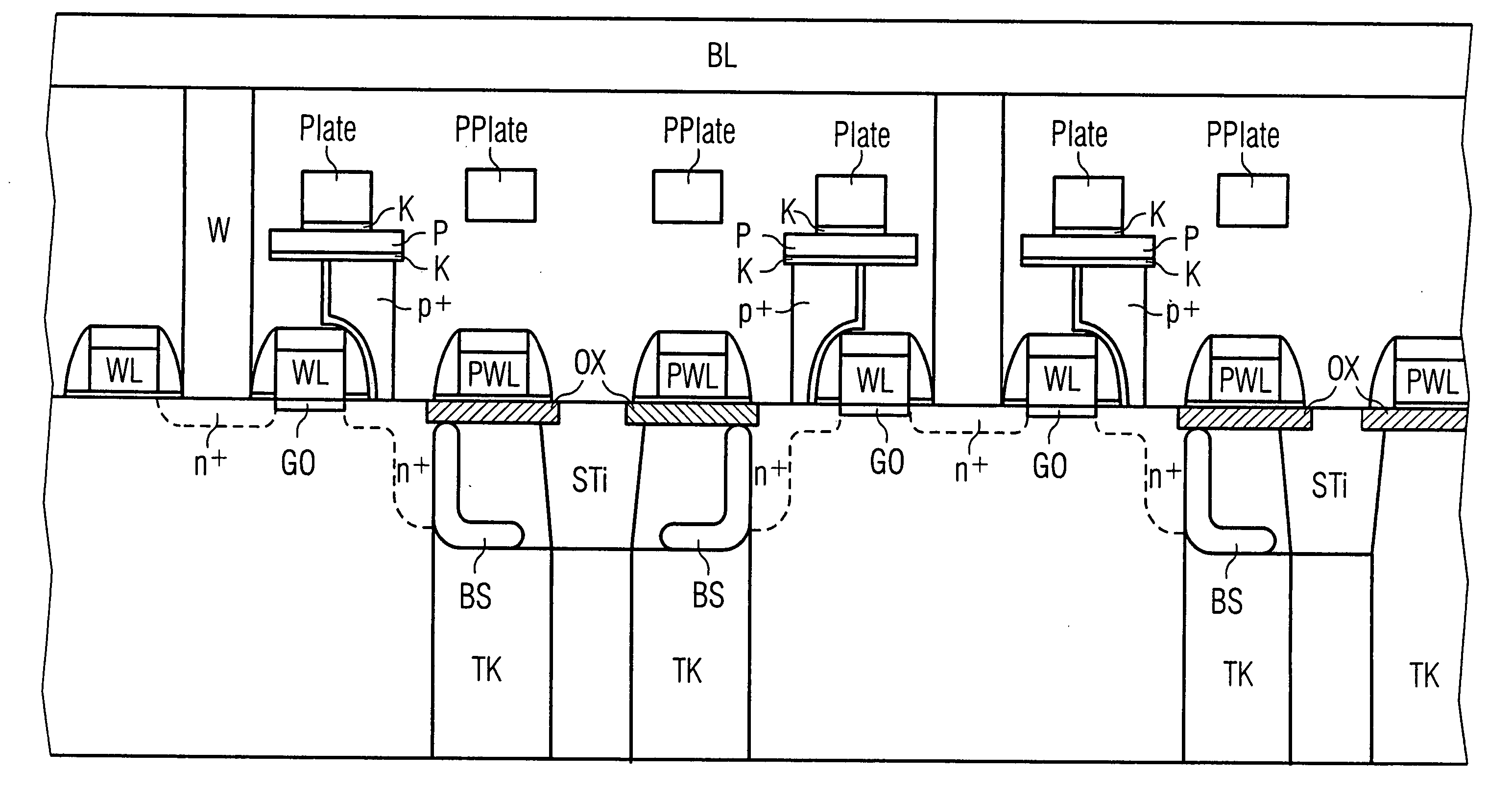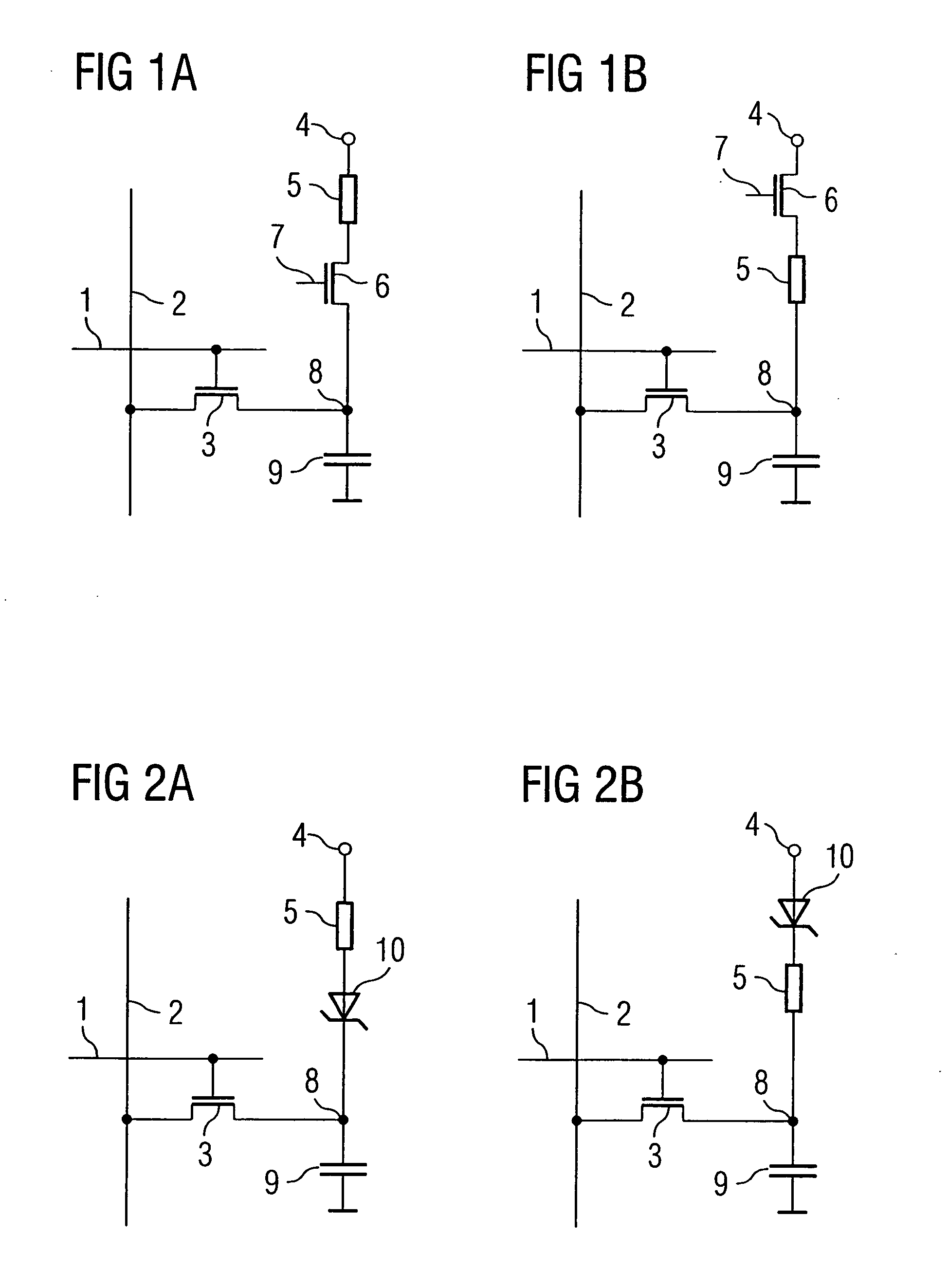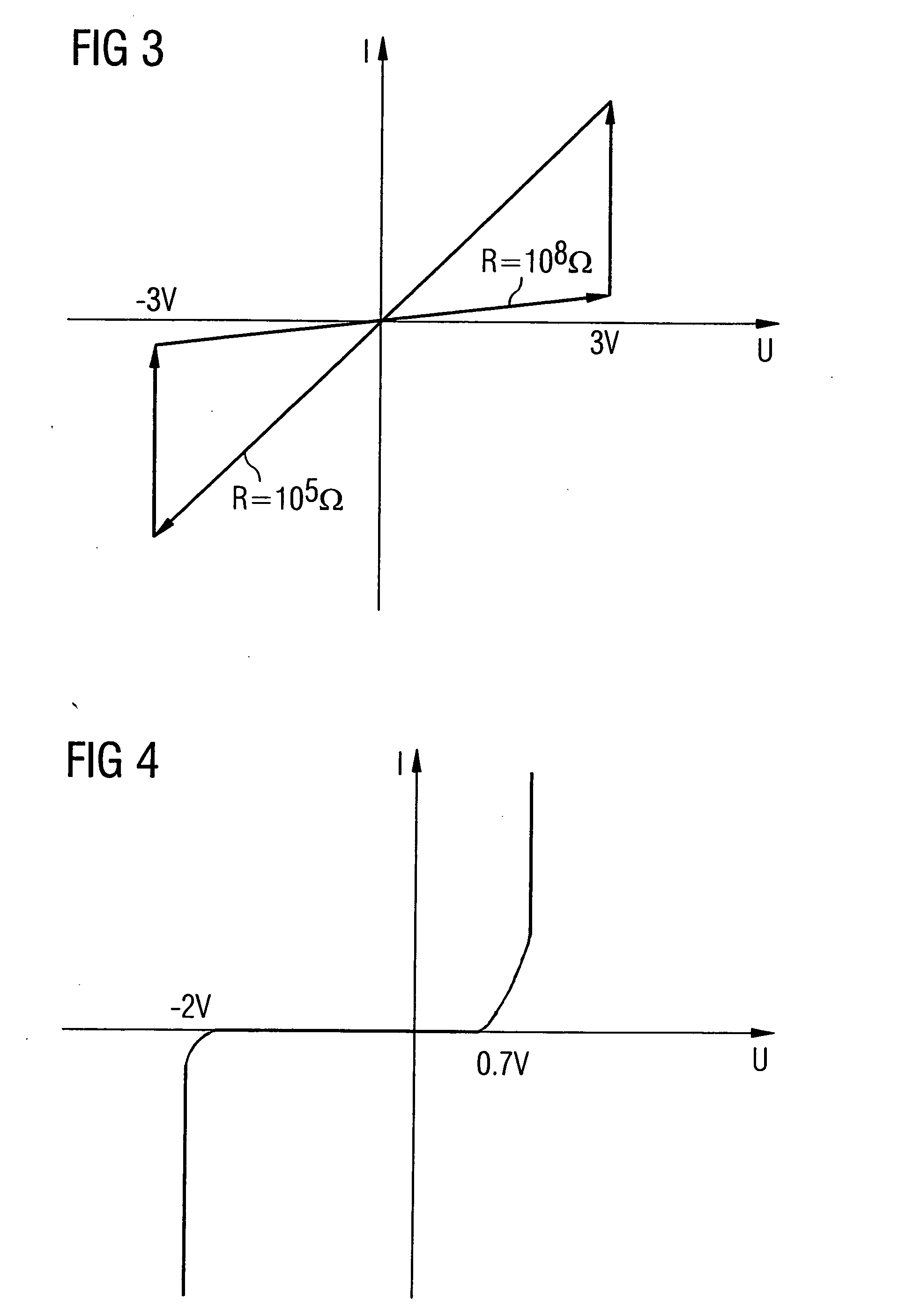Semiconductor memory with volatile and non-volatile memory cells
a memory cell and semiconductor technology, applied in semiconductor devices, digital storage, instruments, etc., can solve the problems of restricted write and read cycles, loss of charge or information, flash memory concept, etc., and achieve the effect of reducing the cell size of the memory, reducing the number of control gate lines, and simple operation
- Summary
- Abstract
- Description
- Claims
- Application Information
AI Technical Summary
Benefits of technology
Problems solved by technology
Method used
Image
Examples
second embodiment
[0061] As is illustrated in FIGS. 2a and 2B, the second embodiment in which the polymer memory device 5 is coupled with a zener diode 10 may also be designed in two different variants that differ in the order of the diode 10 and the polymer memory cell 5. In the embodiment illustrated in FIG. 2A, the order of the series connection starts at the plate connection 4 with the polymer memory device 5 via the zener diode 10 to the capacitor 9. In the embodiment illustrated in FIG. 2B, the order of the series connection starts at the plate connection 4 with the zener diode 10 via the polymer memory device 5 to the capacitor 9. Depending on the layout or the optimization of the leaking current, the one or the other variant of the circuit may be preferred.
[0062]FIG. 11 shows an electric circuit for an inventive semiconductor memory according to the embodiment of the present invention illustrated in FIGS. 2A and 2B with a zener diode, wherein the semiconductor memory is designed according to ...
first embodiment
[0103]FIG. 13 shows an electric circuit diagram for a semiconductor memory according to the present invention with an additional transistor, wherein the semiconductor memory is designed according to the open bit line concept. The open bit line concept comprises a recurrent succession of electric lines that are arranged side by side and in parallel to each other in the following order:
[0104] word line WLi
[0105] control gate line CGi
[0106] plate line Platei
[0107] word line WLi+1
[0108] control gate line CGi+1
[0109] plate line Platei+1
[0110] These electric lines are crossed orthogonally by bit lines BLj and BLj+1. The volatile DRAM memory device comprises a word line transistor or selection transistor 3, respectively, and a capacitor 9, which are correspondingly controlled via the word lines WL and the bit lines BL. To this end, the word lines WLi+1 are connected with the gates of the selection transistors 3 while the bit lines are connected with the source / drain paths of the sele...
PUM
 Login to View More
Login to View More Abstract
Description
Claims
Application Information
 Login to View More
Login to View More - R&D
- Intellectual Property
- Life Sciences
- Materials
- Tech Scout
- Unparalleled Data Quality
- Higher Quality Content
- 60% Fewer Hallucinations
Browse by: Latest US Patents, China's latest patents, Technical Efficacy Thesaurus, Application Domain, Technology Topic, Popular Technical Reports.
© 2025 PatSnap. All rights reserved.Legal|Privacy policy|Modern Slavery Act Transparency Statement|Sitemap|About US| Contact US: help@patsnap.com



